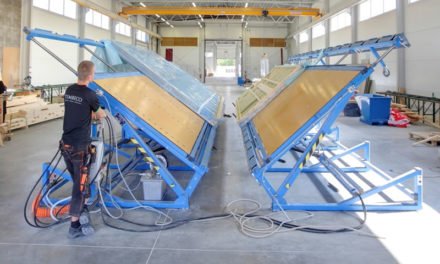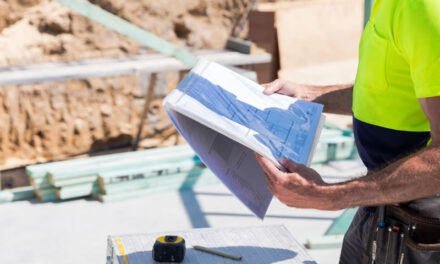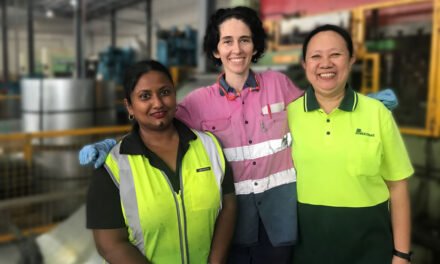Environmental concerns are at the forefront for many consumers and should be a key point of difference for timber suppliers.
Michael Kennedy is a very fact-based environmentalist. The founder of Kennedy’s Timbers, his position comes from a simple proposition: timber is the most environmentally responsible and sustainable construction material available on the market. And we need to promote that.
Best-known for recycled product, 30% of Kennedy’s sales mix is now sustainably sourced new hardwood, predominantly from Queensland and NSW. This shifting journey for the company echoes the one taken by the whole industry.
“Years ago, when I started, I used to have people come to me and say, ‘I don’t want to use timber, but I’ll use recycled timber because that’s much better for the environment,’” Kennedy says. Images put about by some lobby groups of outdated forestry clear-cutting old growth had damaged the public perception of the industry and product.
But, as Kennedy says, “What’s happened is the timber industry has done a very good job talking about the environmental credentials of timber as a product. Now we have people saying, ‘I want to build in an environmentally friendly fashion, so I’ll use timber’ and some of them say, ‘I want to super green it, so I’ll use recycled timber.’ That change from the customers’ point of view has come through the education programs that FWPA, WoodSolutions, TABMA, Timber Queensland and other timber organisations are running.”
But there is further to go in education. “We do architectural presentations (see page 26) where we talk to architects about timber and, while some on the leading edge are across the whole story, most aren’t.”
Kennedy calls it the Grade 6 science problem. Everyone understands that trees are part of the natural world, but what hasn’t cut through fully is the sophistication of timber as a construction and interior material, particularly its carbon sequestration abilities.
“Trees sequester carbon and then store that carbon forever,” says Kennedy. “When you harvest that tree it’s locked in there, and when a new tree grows it absorbs carbon faster than the old tree did. I think that story hasn’t been told as well as it could be, and I think it will continue to develop as people understand the importance of trees in the carbon cycle. When you compare it to steel or aluminium, timber is a deadset no-brainer.”
The beauty of recycled
Recycled timbers account for 70% of Kennedy’s business. While some of that is due to the ‘super green’ consumer, a lot has to do with customers attracted to the product for romantic or practical reasons.
“Every piece of recycled timber comes with a story,” says Kennedy, and his team makes certain to attach accurate provenance to all timbers, allowing consumers to buy items with which they have a personal connection, or which attach to the stories they want to tell in their homes.
While most of Kennedy’s clients are part of the commercial sector, at least 20% of sales go directly to end customers, all of whom are keen to share their reasons for searching for a particular piece of timber.
“For some of them, it’s that the timber came from a particular building or structure, while others are looking for something interesting and they say, ‘Oh, I want something that I can tell people about.’
“We took down the Shorncliffe jetty years ago and we were able to sell that to customers who particularly wanted timber from the jetty because they lived close to it or they had some other connection. We were able to repurpose the timber into a range of products, including furniture, bartops, flooring and cladding, which people were able to bring those into their homes. Having that history can be very important.”
Others choose recycled for the quality of the timber. Cut from old-growth trees that were big and slow-growing, it has different qualities to regrowth hardwood, which is generally younger and, in these days of a warmer climate, faster growing.
“We find regrowth hardwood is a little more hydroscopic,” says Kennedy. “It’ll move more, it’ll spring more. The older timber is, as a rule of thumb, the more dimensionally stable, truer, straighter and stronger it is. It also tends to have a richer colouring in it.”
Industry standards for recycled timber have both helped the product become more popular and increased growth in the sector, which Kennedy is happy about. There are multiple competitors he sees that are able to supply quality product to standard, which has really lifted the market share.
“It’s no more difficult than new timber,” says Kennedy. “If an architect or a designer or homeowner wants to use recycled timber, they can refer to the industry standards and get it supplied to that standard from ourselves or one of our top competitors. They can go out to a range of suppliers and say, ‘This is what I want, can you quote me on that?’ and it means that we are all quoting on like for like.
“It makes it much better for customers. There’s more consistency of product delivery. It’s all processed and turns up in packs, like you would get any other timber from a supplier, graded to a standard.”
The only difference comes from the quality of old-growth products, with some of the harder timbers such as ironbark being tougher to cut. On the whole, though, builders and joiners use recycled timbers exactly as they would any kiln-dried hardwood or equivalent product, which means it incurs no extra costs or time requirements during a build.
And while not every piece comes from a jetty people holidayed under, there’s still a wide range of options available in recycled. As Kennedy says, “Generally the most popular species are what they call the Royal species. They were the timbers that were used in wharf, bridge and power pole construction and they’re predominantly ironbark, spotted gum, tallowwood and blackbutt. Then you get other species such as grey box, Sydney blue gum, jarrah and kauri out of WA, Oregon pine, hoop pine and then the softwoods.”
Award winning
The wide range of quality product has seen Kennedy’s establish close relationships with a number of specialist builders whose work focuses on environmentally responsible or site-sensitive construction. One such home, built by Hervey Bay’s Essentially Residential, recently won the Queensland Housing Industry Awards Home of the Year for 2018 and is a finalist in the HIA Australian National Awards, to be announced May 25.
“We’ve done a lot with Colin and Michelle Clark, and they really care about their timber choices,” says Kennedy.
Essentially Residential co-owner Colin J Clark began a carpentry apprenticeship 46 years ago and his lifelong passion for timber shines through in his constructions. On this job, the owners’ European background meant they wanted to express the roots they were putting down in Queensland, while honouring their heritage.
Drawing from Kennedy’s Sustainable product range, Clark used glowing American oak throughout the interiors, with a high degree of finish, ranging from a custom-made pivot front door, to secret-nailed floorboards and a long feature wall made of horizontal VJ and vertical 90x45mm dressed studs with routed sides that accommodate laser-cut steel shelving.
Outside, select-grade spotted gum is repeated in hero positions, from decking, to seating and the external sauna walls. Across the main face of the building, solid gum boards form an open lattice screen, providing shelter for the private side of the building and helping to reduce exposure to the elements in the seaside location.
The judges’ notes declared, “Everywhere you look, you can see the attention to detail and the thought that has gone into the type and use of materials, which complement each element of the home.”
No small part of that was in the choice of material, which perfectly fitted the story the builders and owners wanted to tell. Colin Clark brought in Stuart Jones, from Hervey Bay Timber and Joinery to help with the highly detailed work, and the team was meticulous in their timber choices.
“This is why we deal with Kennedy’s so regularly,” says Michelle Clark, co-owner of Essentially Residential. “Michael’s timber is real timber. This is what’s at the heart of every home.”
Industry growth
Accolades make Kennedy happy, but his real focus is pushing the expansion of timber – and not just his own – in the construction, furnishing and interior markets.
“Across our business we directly employ 35 people and then we’ve got all the flow-on jobs that create about 140 more,” he says.
Many of these are in rural and regional centres, meaning his business alone has a measurable effect on unemployment in the localities of the sawmills they buy from. It’s just one of the benefits he sees from the growth of timber in Australia.
“We have a product with excellent fire resistance, but I also think the health properties are a super under-marketed potential of timber,” Kennedy says. “We know from FWPA research that people in a timber office building take 15% fewer sick days. I think that is something that is really going to come to the fore for all builds in the years ahead – it’s more advanced in Europe than in Australia.”
It hurts him to say that, because he works with some of the best timber and people in the world, but the Australian market is still impacted by negative perceptions. Kennedy says, “I think the work PlanetArk is doing with FWPA and WoodSolutions is important work. It’s important environmental work and it’s important education work for architects and designers. Anti-forestry lobbyists really damaged the public’s understanding of the true environmental properties of using wood, but that is starting to be corrected. It’s not fully there yet, but it will be.”
All that’s needed now is more of the industry to help get the message out.
For more details, visit www.essentiallyresidential.com.au and www.kennedystimbers.com.au
Full list of timbers used in Essentially Residential home:
- External sloping wall and bench seating is spotted gum.
- Decking floor boards 130mmx20mm are domed spotted gum fixed with stainless steel Spax screws.
- External garage slatting is spotted gum fixed with stainless steel Spax screws.
- Sauna internal cladding is western red cedar
- Sauna external cladding 100mmx20mm is spotted gum shiplap secret nailed
Image: Essentially Residential’s award-winning home features secret-nailed American oak flooring. Photo by Karlie Holloway (image@inmotionphotographybykarlie.com)
The topics covered give a grounding in timbers old and new from a specialist perspective, helping designers to understand what the material is capable of and where it can be used, as well as highlighting the fire safety and sustainability of timber, especially when compared to other construction products. They include:
- Design for durability – selecting the right timber for a 40-year life span;
- Bushfire and fire durability properties of timber;
- Sustainability and certification of timber;
- Recycled timber availability and product range;
- Optimal timber coatings for both external and internal applications;
- Specifying timber decking for commercial and exposed applications;
- Specifying timber cladding for external and internal applications;
- Specifying large section timbers;
- The carbon footprint of specifying timber vs steel/concrete and plastic.
“It’s still an area where there’s not enough information provided,” says Kennedy, who is committed to ongoing education of the market. “By talking to architects, they’re understanding more about how timber can sequester carbon, benefit health and provide better results.”
For more on CPD courses, contact Kennedy’s Timbers on (07) 3293 0528 (Brisbane) or (03) 9359 0300 (Melbourne).

Image: Working architects are taught the properties and specifications of the product.












